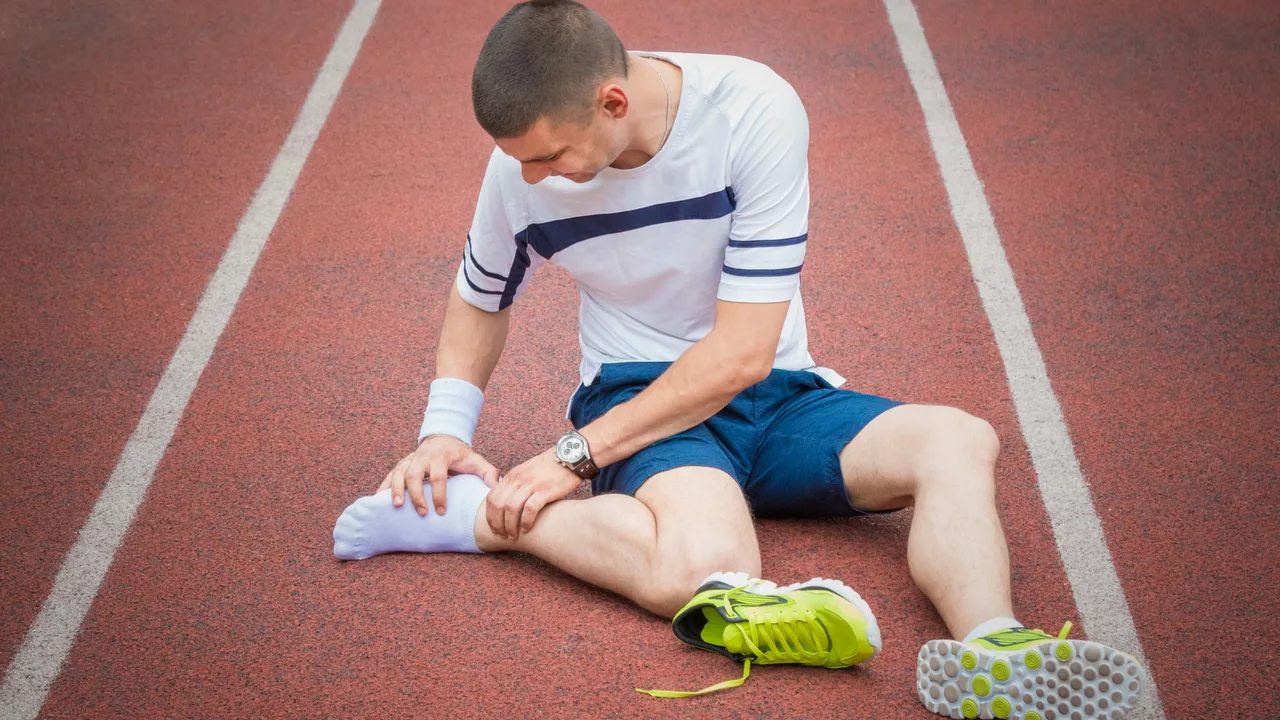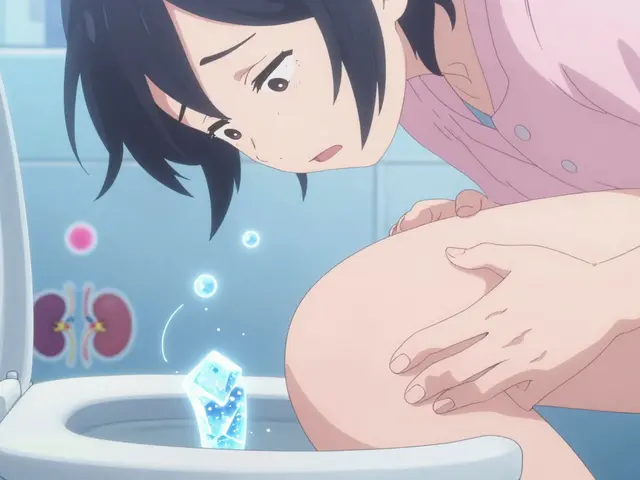Understanding Tendonitis: Knowing Your Enemy
Hello, Arvid here. I've always said that knowledge is power. The first step to preventing and managing tendonitis in athletes is to understand exactly what it is we're dealing with. The human body is an amazing mixture of bones, muscles, and tendons that function together in perfect harmony - most of the time. Tendonitis, for those who might not be familiar, is the inflammation of a tendon, the fibrous tissue that connects muscle to bone. It can affect anyone, whether you are a professional athlete, a weekend warrior, or like me, someone whose idea of exercise is a leisurely walk with our Labrador Retriever, Max.
Sometimes, when the demand exceeds what our tendons can handle, the outcome can be less than harmonious, leading to pain and inflammation - voila, we've got tendonitis. Now, I'm sure my amazing wife, Amelia, would probably have some scientific jargon to throw in there, but you get the idea, right?
Listen to Your Body: Recognising Early Signs
It's an age-old truth that prevention is better than cure, and the same applies to tendonitis. One key aspect of this is learning to recognise the early signs. Many athletes tend to overlook those minor aches and pains, but ignoring your body's alarm bells can lead you down a nasty path.
Tendonitis pain generally arises where the tendon attaches to the bone. The discomfort will likely increase with movement, particularly when engaging the inflamed tendon. If on a morning jog with Max, I suddenly feel a sharp, consistent pain in my ankle, it's time to call it a day and address the issue. By paying attention to your body's signals, you're already one step ahead in preventing a minor issue from developing into full-blown tendonitis.
Press Pause: The Importance of Rest
No matter what you have going on or how pressing your training schedule is, remind yourself of this mantra - rest is best. Overuse is a major cause of tendonitis among athletes. Amelia often tells me that even the most conditioned athletes aren't immune to overuse injuries, and tendonitis is a prime example.
I remember a time when I was preparing for a charity run. Being the dedicated (read: stubborn) chap I am, I trained relentlessly, ignoring the occasional twinge in my knee. Long story short, I eventually developed tendonitis, missed the run and spent weeks rehabilitating. It was a tough lesson to learn!
Gear Up Right: The Role of Appropriate Equipment
Now, let's talk gear. Not just because I enjoy discussing the latest sporting equipment (seriously, who doesn't love buying new trainers), but because using the right equipment can play a significant part in preventing tendonitis. From ergonomic weight-lifting gloves to supportive running shoes or a tennis racket that's the right weight and grip size, each plays a part in minimizing stress on your tendons.
Many moons ago, before I learnt this lesson the hard way, I went for a wild camping trip with Amelia. Carrying a hefty backpack uphill led to my first encounter with shoulder tendonitis. Had I used a properly fitted backpack and shared the load, things would have been different. My advice? Invest in good-quality, appropriate sporting gear – your tendons will thank you!
Don’t Skip the Warm-Up: The Significance of Conditioning
Fellow athletes, the last tip I have for you is something you've heard a million times – don’t skip your warm-up. Range of motion exercises, light cardio, and sport-specific exercises all contribute to preparing your tendons for the activity that lies ahead. It's like warming up a car on a cold morning – it runs smoother, and so will you.
Also, remember to cool down adequately because your tendons need to relax after strenuous activity. As my lovely wife Amelia always says, no matter what sport you're participating in, a good warm-up and cool-down routine can be your first line of defence against tendonitis.
There you have it – Arvid's guide to preventing tendonitis in athletes. Implement these strategies and listen to your body. After all, we only get one, and it’s our job to take care of it the best we can. Whether you are a seasoned athlete or picking up a sport as a newbie, prevention is always better than cure, so take these measures to heart and ensure your athletic life is as injury-free as possible!






11 Comments
Kay Yang
August 1, 2023Nice rundown, Arvid. Keeping the tendons happy is key 😊
Rajesh Kumar Batham
August 13, 2023Great tips! 👍 I’ve seen teammates skip warm‑ups and pay the price, so this is spot on. Keep the emojis coming, stay safe, and enjoy the run! 🚀
Bill Gallagher
August 24, 2023First, let us acknowledge that tendon health, while often overlooked, is fundamentally intertwined with overall athletic performance, and therefore deserves meticulous attention; second, the biomechanical stresses imparted during repetitive motions, such as the cyclic loading of a runner’s footstrike, create micro‑trauma that, if unaddressed, cumulatively evolves into overt inflammation, which we recognize as tendonitis; third, the prophylactic measures outlined by Arvid encompass the essential pillars of injury mitigation, namely adequate rest, appropriate equipment, and systematic warm‑ups, each of which operates synergistically to reduce tensile overload; fourth, the role of footwear cannot be overstated, for ill‑fitting shoes, characterized by inadequate arch support or excessive heel‑to‑toe drop, exacerbate shear forces across the tendinous interface; fifth, proper technique, whether in weightlifting, running, or racket sports, serves as a mechanical lever that distributes load evenly, thereby diminishing focal stress concentrations; sixth, nutrition, often relegated to a peripheral concern, actually supplies the requisite amino acids and micronutrients needed for collagen synthesis, a process indispensable for tendon repair; seventh, incorporating eccentric strengthening exercises, such as heel drops for the Achilles tendon, has been empirically shown to enhance tendon resilience; eighth, regular assessment by a qualified physiotherapist can identify subtle deviations in gait or posture before they manifest as pain; ninth, gradual progression in training volume, adhering to the 10 % rule, safeguards against sudden spikes in load; tenth, consistent cooling‑down routines, involving gentle stretching, facilitate the return of blood flow and the removal of metabolic waste; eleventh, mindfulness of early warning signs, like persistent dull ache during activity, empowers the athlete to intervene promptly; twelfth, collaborative communication with coaches ensures that training plans are tailored to individual capacity; thirteenth, cross‑training, by varying movement patterns, prevents overuse of any single tendon group; fourteenth, adequate sleep, being the time when reparative processes dominate, is essential for tissue regeneration; fifteenth, staying hydrated maintains the viscoelastic properties of connective tissue; finally, the synthesis of all these strategies creates a comprehensive defense against tendonitis, thereby prolonging athletic longevity and performance.
Rajashree Varma
September 5, 2023Staying ahead of tendon pain starts with listening to subtle cues – a light ache is a messenger, not an enemy – and adjusting training before the signal becomes a scream. Simple changes like swapping to a supportive shoe or adding a brief stretch can make a big difference. Keep the mindset positive and the body will respond.
Anshuman Pandey
September 17, 2023Think of your tendons as the ropes that pull you forward; they need strength and flexibility in equal measure. A quick daily routine of dynamic warm‑ups, followed by light eccentric work, keeps those ropes from fraying. Stay aware, stay consistent, stay injury‑free.
Thomas Malloy
September 28, 2023Rest days are non‑negotiable.
Sushma Gowda
October 10, 2023When you’re coaching an athlete, remind them that proper warm‑up isn’t optional – it’s the foundation of every safe session. Encourage gradual progression, and always check that their gear fits correctly. A few minutes of prep saves weeks of rehab.
Angie Wallace
October 21, 2023Good advice – use the right shoes and stretch.
Doris Montgomery
November 2, 2023Another generic list – we’ve seen this before. Nothing new here, just the same old tips repackaged.
Nick Gulliver
November 13, 2023American athletes need to lead by example, push harder, and not hide behind excuses.
Sadie Viner
November 25, 2023While the points may seem familiar, they form the backbone of evidence‑based prevention; each recommendation, from proper biomechanics to adequate recovery, is supported by peer‑reviewed research, and integrating them consistently can dramatically reduce the incidence of tendonitis among competitors.